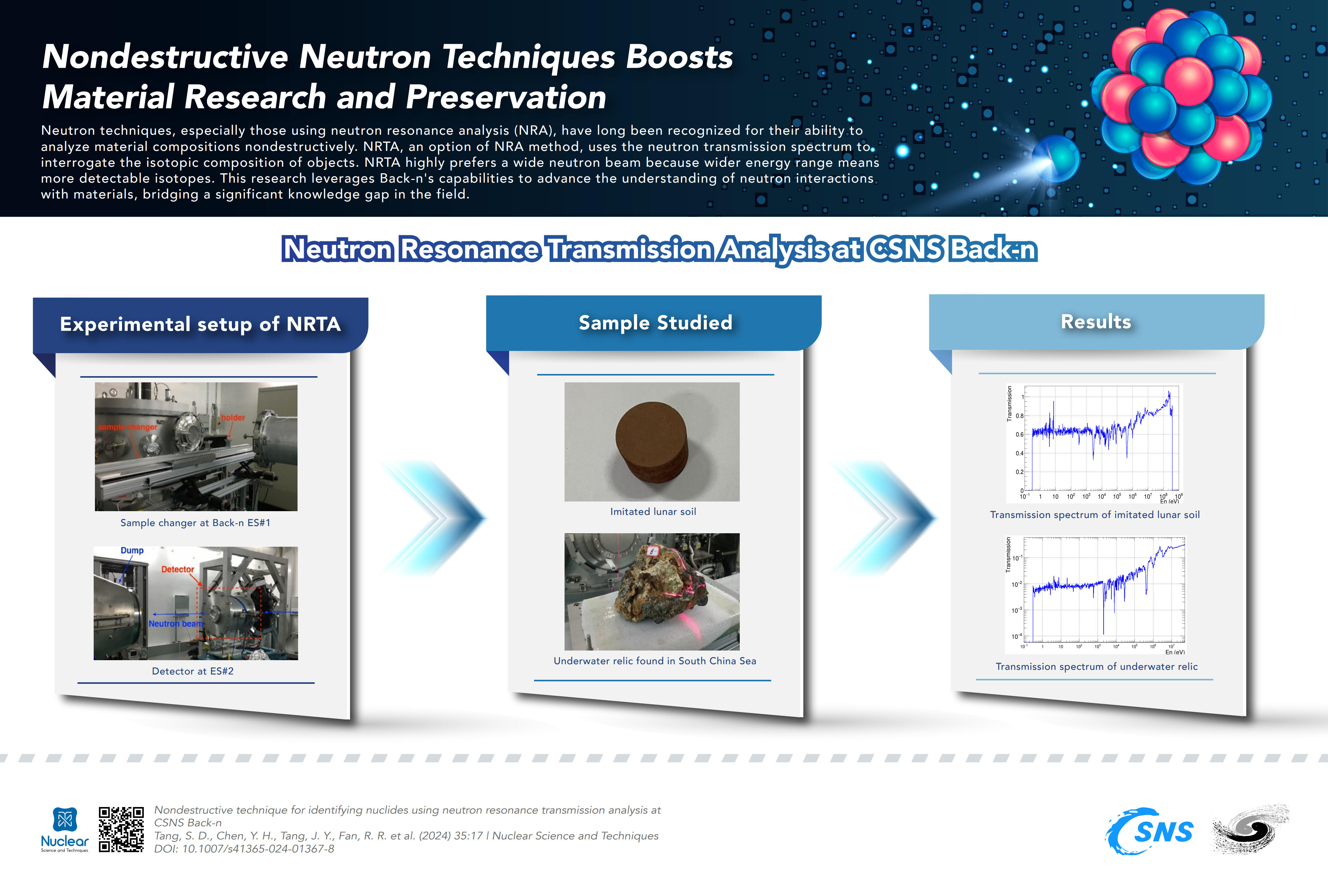Article title: Nondestructive technique for identifying nuclides using neutron resonance transmission analysis at CSNS Back-n
DOI: (TBC)
One sentence summary:
This study showcases a remarkable nondestructive technique using Neutron Resonance Transmission Analysis at CSNS Back-n, fulfilling the identification of various nuclides in materials ranging from imitated lunar soil to underwater relics.
Keywords:
CSNS, white neutron beam, NRTA, nuclide identification, nondestructive method
CSNS、白光中子束流、NRTA、核素识别、无损检测方法
The Novelty (What)
This research introduces the test experiments for the feasibility study, showcasing the effective use of Neutron Resonance Transmission Analysis (NRTA) at the CSNS Back-n facility. The study's major achievement lies in its confirmation that NRTA can accurately identify a range of nuclides, including 16O, 28Si, 27Al, 54Fe, 56Fe, 24Mg, and 23Na in a simulated lunar soil sample, and 63Cu, 65Cu, 16O, 28Si, 56Fe, 40Ca, and 23Na in an underwater relic. This approach leverages the broad energy spectrum of neutrons (from eV to 300 MeV) available at Back-n, a notable advancement in nondestructive material analysis. The success of this study not only establishes the effectiveness of the NRTA method in identifying these specific isotopes with high precision but also sets the stage for future research and applications in diverse fields, potentially improving the way materials are analyzed.
The Background (Why)
Neutron techniques, especially those using neutron resonance analysis (NRA), have long been recognized for their ability to analyze material compositions nondestructively. RTA, an option of NRA method, uses the neutron transmission spectrum to interrogate the isotopic composition of objects. NRTA highly prefers a wide neutron beam because wider energy range means more detectable isotopes. The introduction of the NRTA method at the Back-n facility gives full play to its wide energy spectrum, from eV to 300 MeV. The study's thesis revolves around harnessing the unique properties of Back-n to enhance the NRTA method, thereby offering a more comprehensive and non-invasive approach to material analysis.
The SDG impact (Big Why)
The urgency to develop technologies that support sustainable practices while preserving cultural and historical artifacts has never been more pronounced. The successful implementation of Neutron Resonance Transmission Analysis (NRTA), a nondestructive technique, at China Spallation Neutron Source’s Back-n facility is meaningful to scientific research across multiple disciplines. This advancement comes at a critical time when the global emphasis on sustainable industrial processes and cultural heritage preservation is at an all-time high. This research directly contributes to the United Nations Sustainable Development Goal 9 (Industry, Innovation, and Infrastructure) by promoting innovative technological development in industrial processes. Additionally, the study significantly aligns with SDG 11 (Sustainable Cities and Communities), particularly in its implications for cultural heritage preservation.
Graphical Abstract



